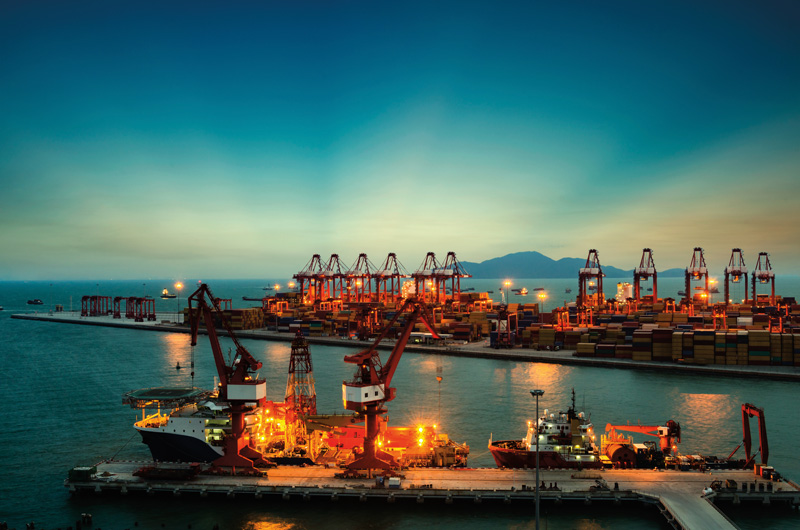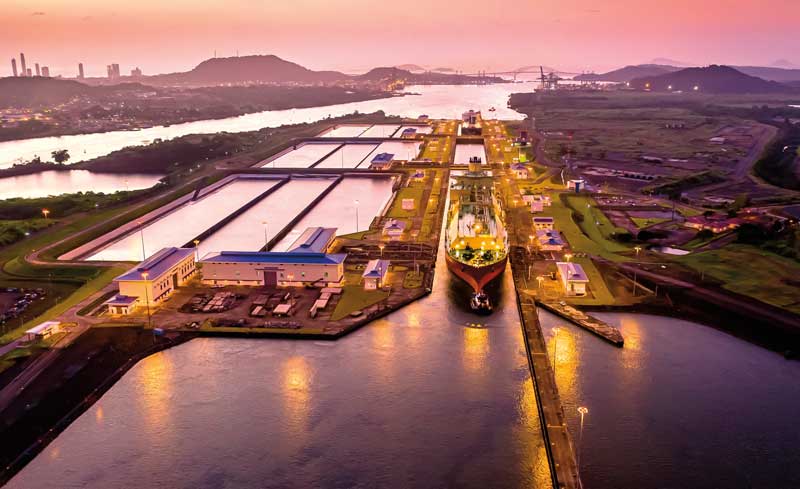There has been some discussion in Mexico as tohether the CIIT will eventually compete with the Panama Canal. However, the data is very precise and enables us to assert that it will be a significant complement to the Canal and not a competitor.
The Panama Canal moves 8.5 million TEUs (containers) of goods per year, through 14,132 vessels, managing to transport 38 or 39 ships daily. In comparison, the goal of the CIIT is to reach 1.4 million TEUs once operating at full capacity.
In addition,, Mexico advocates for a different type of cargo to be transported via the CIIT, more suitable for rail transport. The concept is to attract different types of ships that will allow the passage of various products with greater agility.
The Panama Canal is dedicated to the transfer of ships for the movement of cargo, while in the CIIT one of the lines of business is to move containers between two oceans, but it is not the main one; the fundamental part is direct investment, productive investment through the Development Poles for Well-Being (Podebis). The goal is to attract national and international companies to Podebis, encouraging the establishment of companies with various focuses across different productive sectors, fostering development in the region.
The key to the entire project is to stimulate the entire area's development collectively, thereby boosting the development of the Isthmus, the entire Southeast of Mexico, and the country's economy in general. For all these reasons, the CIIT is considered a complement rather than a competitor to the Panama Canal.
Clear differences
One of the main differences is the way it works. In the CIIT, a train traverses the country's shortest strait, not crossing oceans via the locks used in the Panama Canal. While the latter also has a railway network, its primary method involves locks for entire ships, preventing the possibility of goods staying in the area and fostering continuous development. It is solely the passage of the ship, taking all the cargo at once.
On the other hand, in the Interoceanic Corridor, when the vessel arrives at the port, all the cargo is unloaded, placed on the train, and transported. During this transit, it can take various directions, including towards the United States and Central America, enabling the delivery of necessary goods to the other port.
Another difference is the capacity in terms of the number of ships that can be received and their size. The port of Coatzacoalcos has limited draught, while Salina Cruz, although having a greater draught, is not yet suitable for receiving large-draft vessels. Therefore, Mexico cannot receive all types of vessels of the size accommodated in Panama.
Finally, it's essential to reiterate that receiving and transforming goods to subsequently export a finished product generates a model vastly different from that of the Panama Canal.
CRISIS IN THE PANAMA CANAL
It is crucial to consider that the Panama Canal is currently facing a unique circumstance. Its operation has been affected, first during the most acute phase of the pandemic and more recently by a water shortage crisis.
The low levels of the two artificial lakes supplying the Canal, due to drought, have led to an insufficient water supply to raise and lower vessels through the locks, affecting normal operations. This situation progressively limited their activity in 2023 and so far in 2024.
Before the water problem, up to 38 ships transited the Canal daily, but in July of last year, the Panama Canal Authority reduced the average from 30 to 32 ships. Later, it was announced that from November 1st, it would decrease to 31 vessels.
But not only were the number of operations affected, but also the capacity of vessels due to the reduced hull submersion depth caused by the water shortage.
But the canal crisis is not over, because since last October 31, the Canal Authority notified that, due to the drought, transit would gradually reduce until February 2023, decreasing from 25 reservations to only 18 per day from February 1st, 2024.
Text:Jesús Arias
Photo: envato / Unidad de Comunicación Social de la Secretaría de Marina / OPAN CANAL




